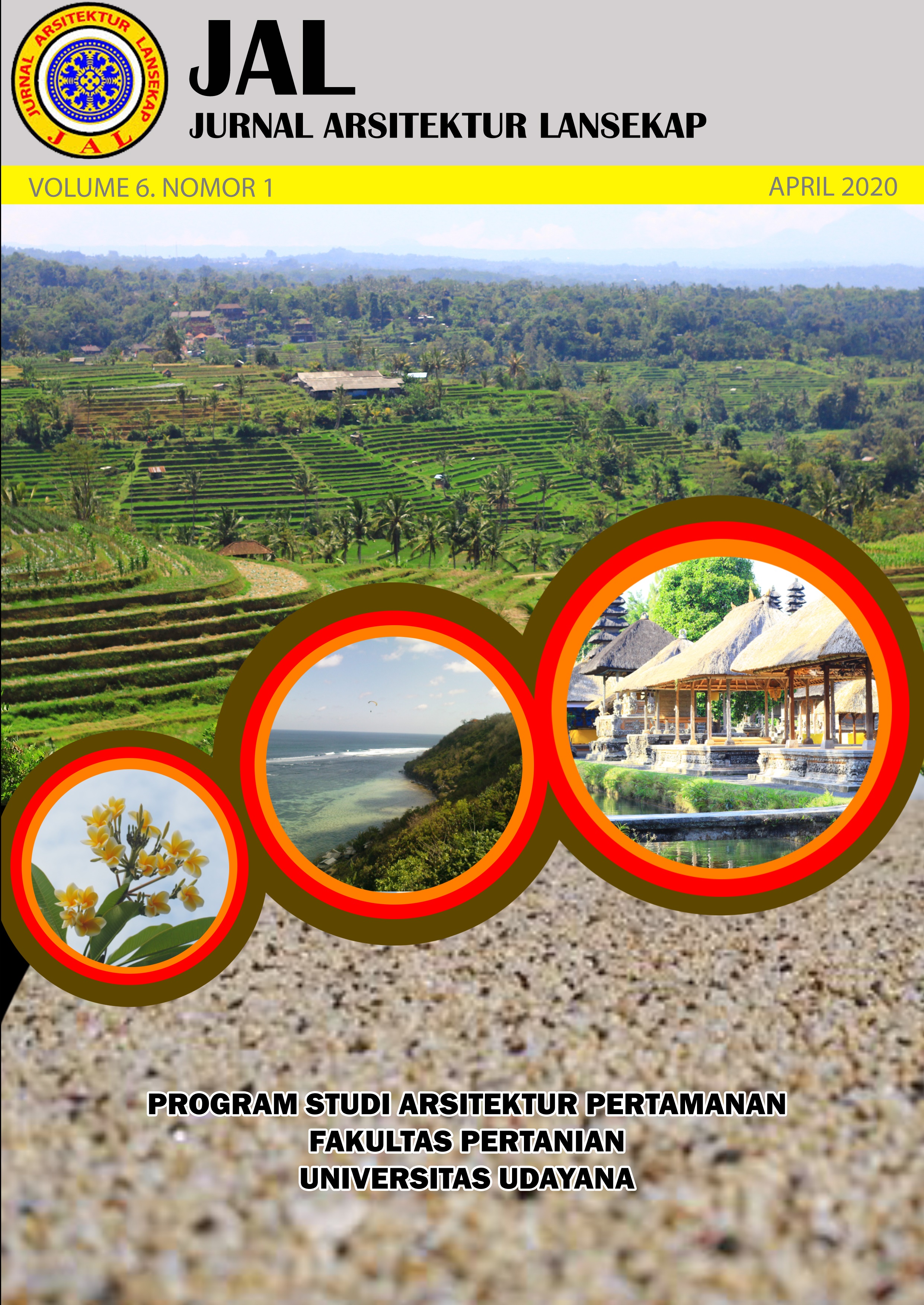Identifikasi kesesuaian tata letak tanaman berdasarkan konsep Tri Mandala (studi kasus Pura Puseh lan Desa, Desa Pakraman Batuan dan Desa Pakraman Kebon Singapadu)
Abstract
Temple is a shrine of Hindu religion and is one of the places for the application of traditional Balinese garden. Temples’s garden should use upakara plant that not only serves as a landscape element but also can be used as a means offering (upakara). The concept of plant placement in the temple’s garden should also characterize the local philosophy, including Tri Mandala. The purpose of this study is to identify plants type and conformity of plants placement in Pura Puseh lan Desa, Desa Pakraman Batuan and in Pura Puseh Lan Desa, Desa Pakraman Kebon Singapadu based on Tri Mandala concept. The study uses survey methods with data collection techniques, through field observations, interviews, and library studies. The results showed that the two temples used upakara plants and ornamental plants as soft elements. The concept of plants placement is largely in accordance with the concept of Tri Mandala.
Downloads
References
Prajoko, Ahmad. 2012. Pertamanan Tradisional Bali Berlandaskan Unsur Satyam, Siwam, Sundaram, Religi dan Usada [internet]. [diunduh pada 15 Oktober 2016]. Tersedia: http://www.parissweethome.com/bali/cultural_my.php?id=11
Prastika, I N. 2009. Usada Pengobatan Tradisional Bali. E-Jurnal Seni Rupa dan Desain 1(3) : Halaman 29-31.
Subamia, I Dewa Putu. 2001. Revitalisasi Taksu Lingkungan Berwawasan Kearifan Lokal Melalui Pembelajaran Taksonomi Tumbuhan Usada dan Upakara (Pendekatan Etnotaksonomi dalam Pendidikan Berwawasan Lingkungan). Jurnal Vegetalika 1(1) : Halaman 20-31.
Sudarsana, A. A. G. Dalem, S. M. Sarwadana dan A. A. G. Sugianthara. 2015. Tanaman Upakara dan Usada pada Taman Tradisional Bali. Dalam Buku Taman Tradisional Bali.

This work is licensed under a Creative Commons Attribution-ShareAlike 4.0 International License.
An author who publishes in the Jurnal Arsitektur Lansekap (JAL) agrees to the following terms:
- Author retains the copyright and grants the journal the right of first publication of the work simultaneously licensed under the Creative Commons Attribution-ShareAlike 4.0 License that allows others to share the work with an acknowledgement of the work's authorship and initial publication in this journal
- Author is able to enter into separate, additional contractual arrangements for the non-exclusive distribution of the journal's published version of the work (e.g., post it to an institutional repository or publish it in a book) with the acknowledgement of its initial publication in this journal.
- Author is permitted and encouraged to post his/her work online (e.g., in institutional repositories or on their website) prior to and during the submission process, as it can lead to productive exchanges, as well as earlier and greater citation of the published work (See The Effect of Open Access).
Read more about the Creative Commons Attribution-ShareAlike 4.0 Licence here: https://creativecommons.org/licenses/by-sa/4.0/.







